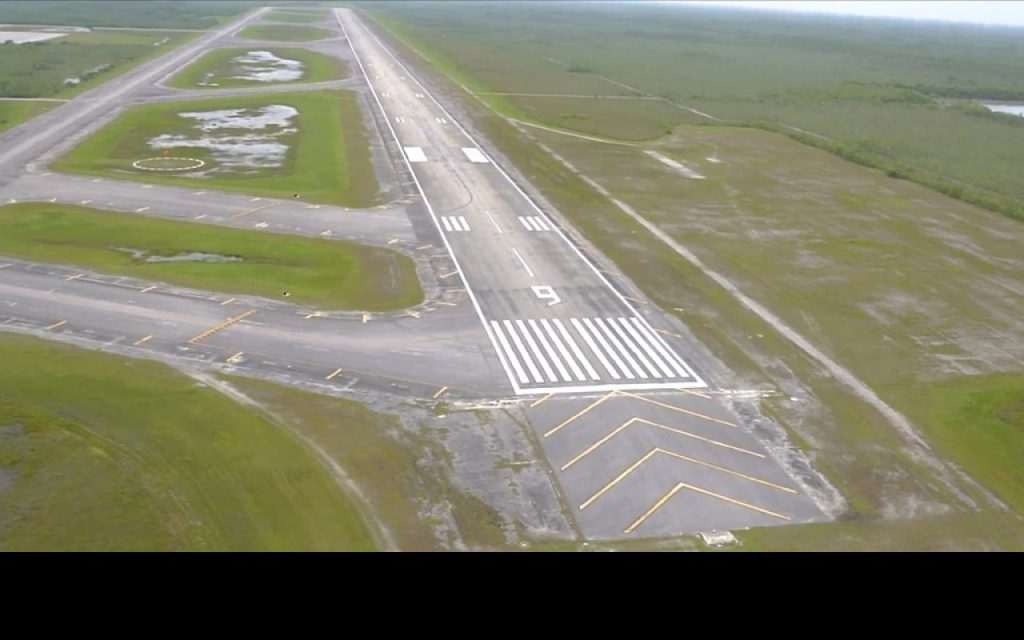Florida has begun converting a long-abandoned airport in the heart of the Everglades into a large migrant detention center, raising serious concerns from environmental groups and human rights advocates. Dubbed “Alligator Alcatraz,” the facility is located at Dade-Collier Training and Transition Airport, a remote site roughly 70 kilometers from downtown Miami. Once used for pilot training, the swamp-surrounded airfield is now the center of a controversial plan backed by Florida Governor Ron DeSantis to support President Donald Trump’s sweeping immigration crackdown.
Construction crews have arrived at the site in recent days, delivering tents, portable toilets, and other materials to prepare for housing up to 1,000 detainees. The name “Alligator Alcatraz” stems from the fact that the airport is surrounded by thick swampland filled with alligators and snakes, escaping nearly impossible. Florida Attorney General James Uthmeier stated in a social media video that the location was ideal, saying, “If people get out, there’s not much waiting for them other than alligators and pythons.”
The project follows a 2023 executive order by DeSantis, invoking emergency powers to curb illegal immigration. The detention center is set to begin operations as early as July or August and is viewed by state officials as a fast, cost-effective way to handle rising numbers of undocumented migrants. Homeland Security Secretary Kristi Noem confirmed the facility will be funded by the Federal Emergency Management Agency (FEMA), as part of efforts to rapidly expand detention capacity nationwide. ICE is currently detaining over 59,000 people—140 percent above its stated capacity—according to data released by CBS News.
Florida officials have hinted this will not be the last such facility. DeSantis noted that another site is being considered at Camp Blanding, a former military base over 300 miles north of the Everglades location. “We’ll probably also do something similar up at Camp Blanding,” he said during a press conference, hinting that expansion plans are already in motion.
But the plan has drawn sharp criticism from environmentalists and civil rights organizations. Betty Osceola, a member of the Miccosukee Native American community who lives near the site, joined recent protests against the construction. Speaking near a canal where alligators are commonly spotted, she said she fears both the environmental damage and the poor living conditions that detainees might face in the isolated swamp facility.
Human rights advocates have raised alarms as well. The ACLU of Florida condemned the project as “not just cruel and absurd,” but a dangerous example of how immigration policy is shifting from processing to punishment. They warned that ICE facilities already have a record of medical neglect and mistreatment, and that placing detainees in an inaccessible area like the Everglades could lead to further abuses with less oversight.
Local authorities in Miami-Dade County, which owns the airfield land, say they were not consulted about the project. Mayor Daniella Levine Cava said she has requested official details from the state, citing concerns about environmental harm and unclear funding sources. Her office noted that these issues were “clearly laid out” to state leaders, but have yet to receive a detailed response.
Despite the backlash, construction is moving quickly. Trucks delivering generators were seen entering the site earlier this week. Meanwhile, many undocumented migrants in Miami-Dade and surrounding areas have gone into hiding, fearing arrest and detention in the remote swamp facility. Reports gathered by BBC Mundo reveal that some are now afraid to go to work or leave their homes, as immigration raids increase across the country.
The Alligator Alcatraz project has become a powerful symbol of the Trump administration’s renewed push for mass deportations and stricter immigration enforcement. Supporters call it a practical response to rising migrant numbers. Critics say it risks long-term harm to people and the environment, and sets a dangerous precedent for future immigration policies.

